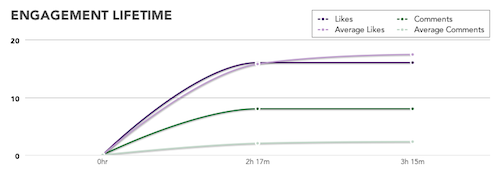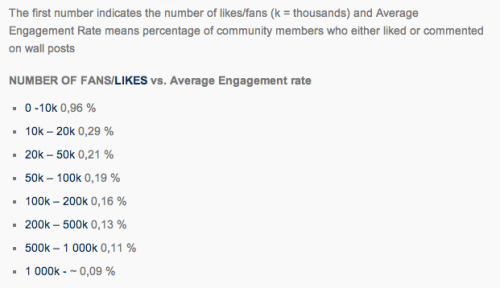
This article was co-written by Jon Ostrow and Ariel Hyatt
Last week, we discussed some major obstacles that are stopping your effective growth on your Facebook fan page.
Facebook is making it almost impossible for the non-advertiser to create effective engagement, but there is no doubt that there is also human error involved as well. Take a look at last week’s article for a full breakdown.
The reaction from that article made us realize something…
A vast majority of social media users are still unaware of just how difficult growth of a Facebook fan page can actually be.
This data is not meant to scare you away from building your community on Facebook, the purpose is to shine a light on the harsh reality that is Facebook-centric community building.
With this understanding, we hope to help you set more realistic goals, put more effective strategies in place and build stronger fan communities:
1. Average Life of a Facebook Post
One common complaint about the internet in general by new users (or non-users) is that they don’t like the idea that something published online ‘lives forever’.
Well fret not… because this couldn’t be further from the truth.
Yes, your content will technically be online, but the average lifespan of a Facebook post is just a short 3 hours. This means that after the average 3 hour timespan, your Facebook posts will no longer show up in any of your fans’ news feeds.
[caption id=”attachment_9290” align=”aligncenter” width=”500”] Image Source: edgerankchecker.com[/caption]
Image Source: edgerankchecker.com[/caption]
Although this is actually a far higher number than, say, Twitter (see: 18 minutes of fame), this does mean that you MUST understand when your fans are online and most likely to engage with your posts so that each day you post in your most effective 3 hour window.
2. Average % of Total Fan Base Willing to Engage with a Brand Page
As we discussed last week, Mashable covered a recent study by Napkin Labs that exposed the shocking statistic that only 6% of a total fan base will ever actually engage with a brand page:
On average, just 6% of fans engage with a brand’s Facebook Page via likes, comments, polls and other means, according to a study from Napkin Labs, a Facebook app developer that works with brands and agencies. Of those fans that did, the average engagement was the equivalent of less than one like over the course of the eight weeks the study was conducted.
While this does fuel the fire of the argument that you need more fans - A LOT more fans - in order to build any sort of community on your Facebook page, this study actually contributes to the idea of having 1,000 True Fans (see Ariel’s series on that here).
The fact that 6% of a total fan base will engage with a brand page is partially because of Facebook’s algorithm… Facebook’s ‘Edge Rank’ algorithm is a system that ranks and displays only the most ‘relevant’ and ‘important’ content on your news feed from your friends and pages you have liked. But the issue of your fan base lacking engagement also has a lot to do with the fact that the overwhelming majority of the average fan base is made up of ‘Ambient’ or even ‘Engaged’ fans, and not the kind of ‘Super Fans’ needed to truly build a consistently engaged community.
3. Average Engagement Rate
And as scary as the ‘6%’ stat above is, this one gets even more frightening…
There have been several recent studies done on the actual average engagement rate of a page (the ‘People Talking About This Page’ number) and it is shown that the average engagement rate of a fan page is only .96% (yes, that’s less than 1%).
THIS MEANS: Anything above a 1% engagement is considered strong, results-wise.
The difference between this stat and the one above (See #2) is that the number above reflects the percentage of fans who are EVER willing to engage with a page over the lifetime of the relationship. In other words, for the average fan page, 94% of your fans never have nor will they ever engage.
Meanwhile, this stat reflects the true engagement of a fan page on Facebook’s rolling 7 day scale. In other words, within 7 days (on average), the # of ‘People Talking About This Page’ / the # of ‘Total Fans’ will equal around 1%.
Here is a great matrix from Michael Leander that shows how this engagement rate actually breaks down:
[caption id=”attachment_9291” align=”aligncenter” width=”500”] Image Source: http://www.michaelleander.me[/caption]
Image Source: http://www.michaelleander.me[/caption]
On Next Week’s Installment…
Next week, we will continue with Part 2 of this series where we will discuss why your visibility and engagement are so low, and why you’re Facebook posts won’t be going ‘viral’ any time soon.